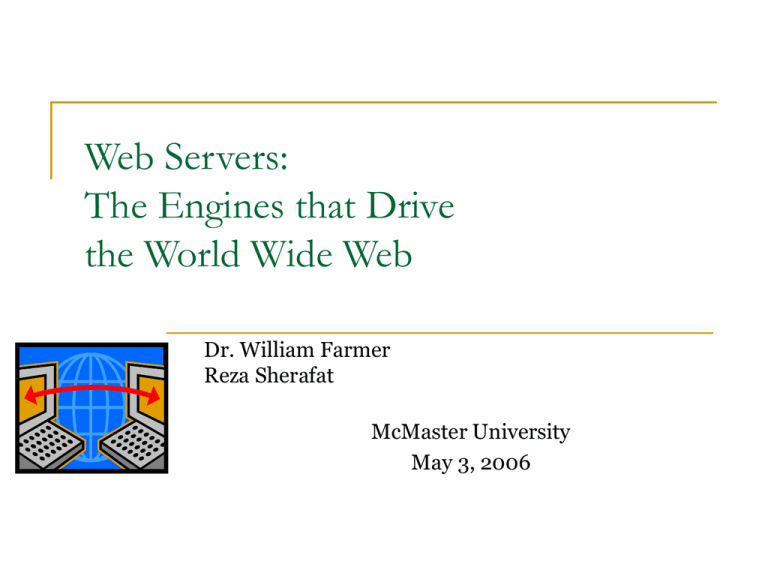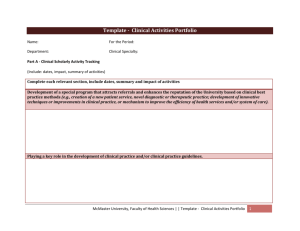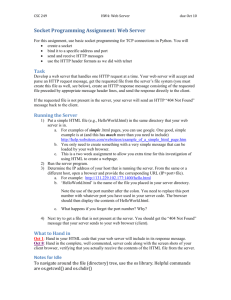ppt - McMaster University
advertisement

Web Servers: The Engines that Drive the World Wide Web Dr. William Farmer Reza Sherafat McMaster University May 3, 2006 Outline Computer Networks The client-server model Creating and installing a web page How a web server works Computer Networks A network is a group of computers connected together The Internet is the global computer network Different services are provided by servers across the Internet and clients access those services Network Addresses To be identified on the network, computers have unique addresses associated with them The addresses are managed by a protocol called Internet Protocol (IP) 192.168.17.3 is an IP address IP addresses are hard to remember, so to be more readable Hostnames are used Each host name is associated with one IP address www.mcmaster.ca is a hostname which is equivalent to 130.113.64.64 Fundamentals Computer applications Process: a running program in a computer To be able to access the outside world on the network, processes communicate through ports. Port: entry points to a computer system (denoted by a port #). Client – Server Model Client 1 Process Port Connection Client 2 Server Client – Server Model A server process provides services. A server process at a server listens to a port, and is ready to receive client requests. A client process at a host, communicates to the server process by connecting to the port # that the service is listening to. The client has to know the server address, the server port # and the protocol to communicate to the server process. Protocols Daytime service [RFC867]: Client: Hello, <client address> here. May I have a timestamp please. Server: Here it is: (time stamp follows) World Wide Web session (HTTP): Client: Hello, <client address> here. Server: Okay. I am a web server and speaks protocol HTTP1.0. Client: Great, please get me the web page index.html at the root of your document tree. Server: Okay, here’s what’s in the page: (contents follows). HTTP Protocol GET Page1.html Page1.html Server HTTP Protocol GET Image.jpg The browser at the client parses the HTML document and determines that some pictures should also be loaded. - The browser request the image files the same way. Server Client – Server Model The request/response sequence continues … client server request1 response 1 request2 response 2 requestn response n Write/upload and access your own online content Open a browser and retrieve the template at http://wiglaf.cas.mcmaster.ca/workshop/template/ You need to edit the template and fill it out with your own information. You may use any text editor (e.g. notepad) You can easily change the Page title Content Pictures: You can use the images that you find from the web. Save your changes to the template, and rename it. Upload you new file using the upload page at http://wiglaf.cas.mcmaster.ca/workshop/upload/ Use the link to access your page. How a web server works?




